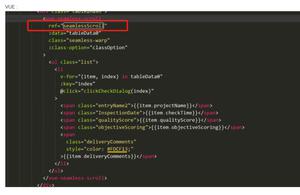如何解决nanoGPT char截断中文是不合理的情况?

今天在尝试nanoGPT中文诗词生成的时候,发现sample.py中的生成文字截断部分使用了char,不适合中文,有没有这方面的大神帮我看一下如何解决。我的想法是在生成20行之后就截断文字并生成下一个。请问如何修改sample.py文件?
附上sample.py源码:
"""
Sample from a trained model
"""
import os
import pickle
from contextlib import nullcontext
import torch
import tiktoken
from model import GPTConfig, GPT
# -----------------------------------------------------------------------------
init_from = 'resume' # either 'resume' (from an out_dir) or a gpt2 variant (e.g. 'gpt2-xl')
out_dir = "E:\\nanoGPT\\nanoGPT-master\\gushi" # ignored if init_from is not 'resume'
start = "\n" # or "<|endoftext|>" or etc. Can also specify a file, use as: "FILE:prompt.txt"
num_samples = 10 # number of samples to draw
max_new_tokens = 1000 # number of tokens generated in each sample
temperature = 1 # 1.0 = no change, < 1.0 = less random, > 1.0 = more random, in predictions
top_k = 200 # retain only the top_k most likely tokens, clamp others to have 0 probability
seed = int(input("seed:"))
device = 'cuda' # examples: 'cpu', 'cuda', 'cuda:0', 'cuda:1', etc.
dtype = 'float32' if torch.cuda.is_available() and torch.cuda.is_bf16_supported() else 'float16' # 'float32' or 'bfloat16' or 'float16'
compile = False # use PyTorch 2.0 to compile the model to be faster
exec(open('configurator.py').read()) # overrides from command line or config file
# -----------------------------------------------------------------------------
torch.manual_seed(seed)
torch.cuda.manual_seed(seed)
torch.backends.cuda.matmul.allow_tf32 = True # allow tf32 on matmul
torch.backends.cudnn.allow_tf32 = True # allow tf32 on cudnn
device_type = 'cuda' if 'cuda' in device else 'cpu' # for later use in torch.autocast
ptdtype = {'float32': torch.float32, 'bfloat16': torch.bfloat16, 'float16': torch.float16}[dtype]
ctx = nullcontext() if device_type == 'cpu' else torch.amp.autocast(device_type=device_type, dtype=ptdtype)
# model
if init_from == 'resume':
# init from a model saved in a specific directory
ckpt_path = os.path.join(out_dir, 'ckpt.pt')
checkpoint = torch.load(ckpt_path, map_location=device)
gptconf = GPTConfig(**checkpoint['model_args'])
model = GPT(gptconf)
state_dict = checkpoint['model']
unwanted_prefix = '_orig_mod.'
for k,v in list(state_dict.items()):
if k.startswith(unwanted_prefix):
state_dict[k[len(unwanted_prefix):]] = state_dict.pop(k)
model.load_state_dict(state_dict)
elif init_from.startswith('gpt2'):
# init from a given GPT-2 model
model = GPT.from_pretrained(init_from, dict(dropout=0.0))
model.eval()
model.to(device)
if compile:
model = torch.compile(model) # requires PyTorch 2.0 (optional)
# look for the meta pickle in case it is available in the dataset folder
load_meta = False
if init_from == 'resume' and 'config' in checkpoint and 'dataset' in checkpoint['config']: # older checkpoints might not have these...
meta_path = os.path.join('data', checkpoint['config']['dataset'], 'meta.pkl')
load_meta = os.path.exists(meta_path)
if load_meta:
print(f"Loading meta from {meta_path}...")
with open(meta_path, 'rb') as f:
meta = pickle.load(f)
# TODO want to make this more general to arbitrary encoder/decoder schemes
stoi, itos = meta['stoi'], meta['itos']
encode = lambda s: [stoi[c] for c in s]
decode = lambda l: ''.join([itos[i] for i in l])
else:
# ok let's assume gpt-2 encodings by default
print("No meta.pkl found, assuming GPT-2 encodings...")
enc = tiktoken.get_encoding("gpt2")
encode = lambda s: enc.encode(s, allowed_special={"<|endoftext|>"})
decode = lambda l: enc.decode(l)
# encode the beginning of the prompt
if start.startswith('FILE:'):
with open(start[5:], 'r', encoding='utf-8') as f:
start = f.read()
start_ids = encode(start)
x = (torch.tensor(start_ids, dtype=torch.long, device=device)[None, ...])
# run generation
with torch.no_grad():
with ctx:
for k in range(num_samples):
y = model.generate(x, max_new_tokens, temperature=temperature, top_k=top_k)
print(decode(y[0].tolist()))
print('---------------')
我的想法是在生成20行之后就截断文字并生成下一个。
谢谢了!
以上是 如何解决nanoGPT char截断中文是不合理的情况? 的全部内容, 来源链接: utcz.com/p/939000.html







